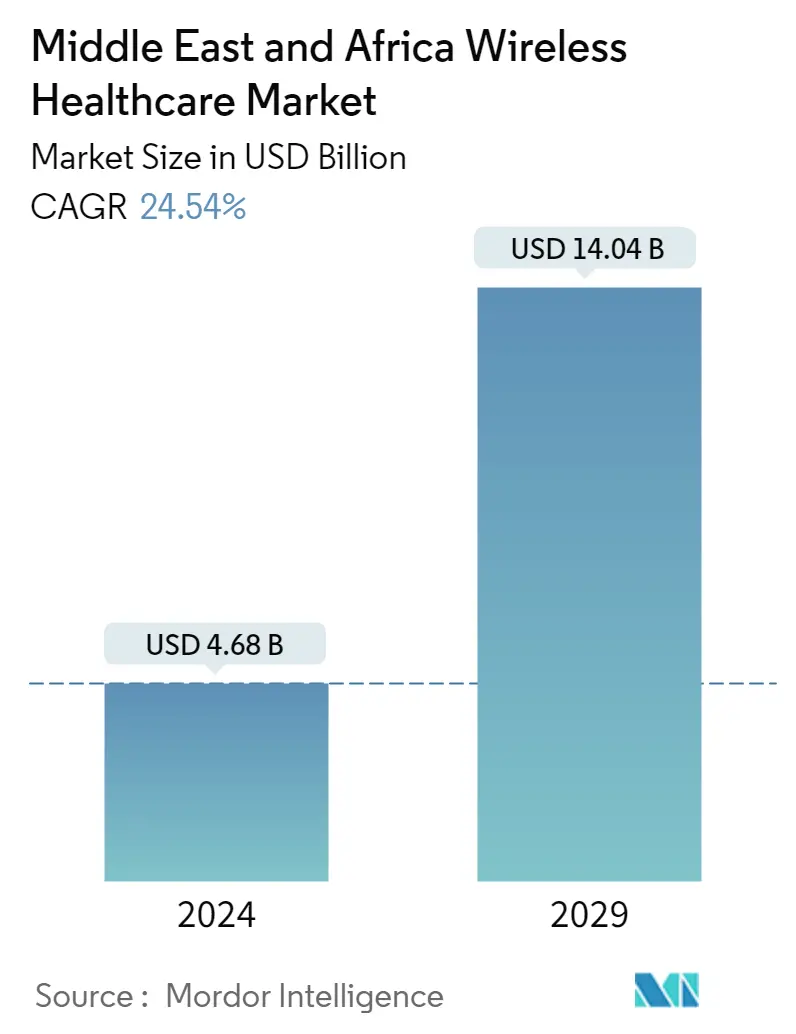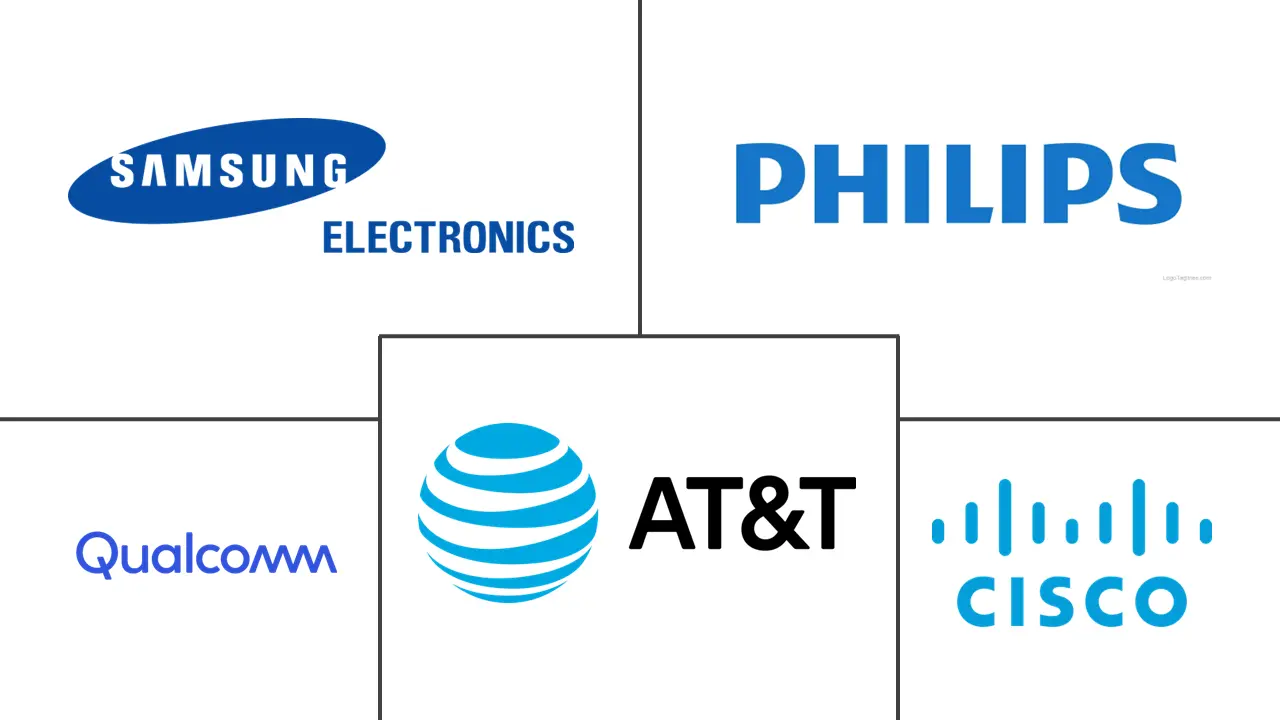Market Size of Middle East and Africa Wireless Healthcare Industry

| Study Period | 2019 - 2029 |
| Base Year For Estimation | 2023 |
| Market Size (2024) | USD 4.68 Billion |
| Market Size (2029) | USD 14.04 Billion |
| CAGR (2024 - 2029) | 24.54 % |
| Market Concentration | Medium |
Major Players
*Disclaimer: Major Players sorted in no particular order |
Need a report that reflects how COVID-19 has impacted this market and its growth?
MEA Wireless Healthcare Market Analysis
The Middle East and Africa Wireless Healthcare Market size is estimated at USD 4.68 billion in 2024, and is expected to reach USD 14.04 billion by 2029, growing at a CAGR of 24.54% during the forecast period (2024-2029).
It is predicted to aid the wireless healthcare market advance further across the region on the back of increased streamlining of communication and pressure relieving on the healthcare administration. Wireless healthcare has developed as a thriving healthcare industry around the region because of enhanced avoidance of cardiac attacks or disease identification for sooner treatment commencement.
- With considerable improvements in healthcare infrastructure, there has been an increased demand for Internet of Things (IoT) enabled remote monitoring and communication solutions. This, in turn, has accelerated the broad use of wireless healthcare solutions in hospitals and nursing homes to provide better treatment by collecting medical data via body-worn sensors. In conjunction with this, the increasing prevalence of smartphones and the acceptance of various wearable medical devices in diagnostic sensors serve as other growth-inducing elements.
- Transmission of high-quality images, such as ultrasound and medical images, can be considerably shortened by using a high-bandwidth transmission. Several monitoring and diagnostic tasks can be done concurrently with today's wide network capability. High QoS improves the reliability and efficiency of data delivery. For example, diagnostic images may be sent from the ambulance to the hospital, allowing clinicians to begin diagnosing as the patient is being transported. A hospital intranet can be built using WiMAX networks. In place of several WLAN access points, only a few WiMAX base stations may cover the entire hospital.
- According to National Center for Biotechnology Information, Bluetooth low energy also operates in the 2.4 GHz band. It has a range of 15 to 30 meters and a bandwidth of 1 Mbps (four times that of ZigBee). There are two types of Bluetooth low-energy implementations: "dual mode" and "single mode." Single-mode devices are small radio communication units that can be incorporated into wireless medical monitoring with dimensions of just a few millimeters. Because of the low power consumption, medical monitors can function for months or even years on standard coin-cell batteries.
- As technology has advanced, so have the tactics of hackers. There is a new breed of cyberterrorism that is daunting. It is enhanced cybersecurity must be a priority in all areas of healthcare, including medical devices. Medical information is exchanged between various stakeholders, such as manufacturers, healthcare providers, and suppliers. Robust security measures are required whenever the data is exchanged through medical devices to mitigate breaches in security.
- Furthermore, the rising prevalence of hospital-acquired infections (HAIs), particularly during the COVID-19 pandemic, increased demand for wireless healthcare to reduce physical contact, fueling the market growth. Furthermore, introducing mHealth solutions, mobile applications for healthcare practitioners to engage with patients, and biosensors to collect information about health issues is fueling market expansion. Additional factors, such as hospitals and governments using a patient-centric approach, the increasing adoption of linked devices, and the mainstreaming of cloud computing to store patient data, are producing a bright outlook for the market.
